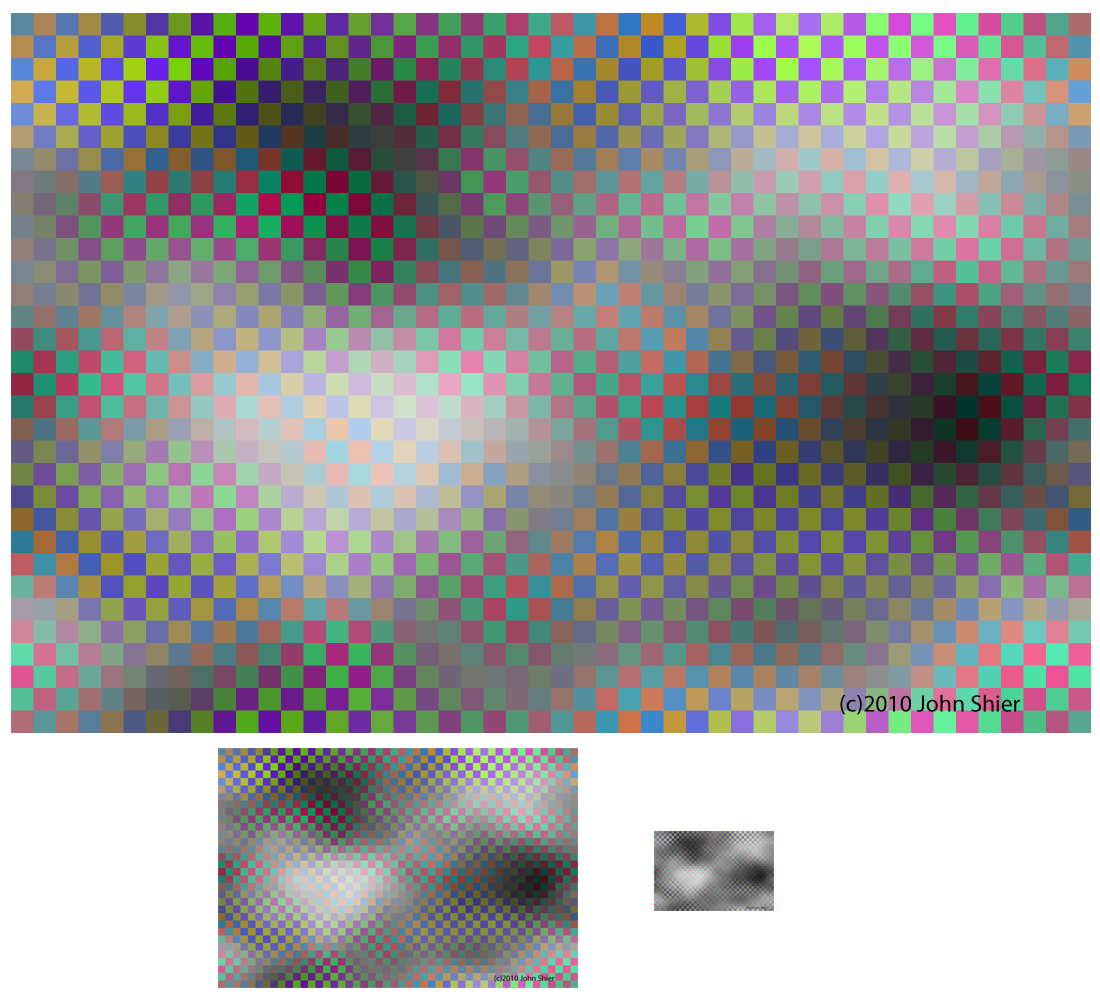
Scroll down for comments on this image.

This is like image 11 with a "checkerboard" effect. The odd-numbered squares are exactly the same as in image 11, but the even-numbered ones have been "rotated" by 180 degrees about the diagonal "gray" axis in color space.
Each odd-numbered square is now surrounded by 4 even-numbered ones with any two abutting colors having a "complementary" relationship. I found this image surprising. Adjacent complementary colors, according to art texts, should give especially sharp contrasts, but that isn't what we see here.
The eye tends to add complementary colors to get white -- something first noticed by Isaac Newton. The eye-brain system seems to find this image hard to interpret, resulting in "waviness", "shimmer", and "motion" in the image. An illusion.
If the image is substantially magnified, the illusion goes away and one only sees colored squares -- what is "really" there. If the illusion is substantially shrunk (see the smaller images) the eye increasingly sees the whole thing as simply gray tones. Each of the squares is really quite colorful, but the illusion washes this out to a gray tone.
Such a rotation by 180 degrees in color space is the same as moving three positions around a 6-color color wheel. It should be kept in mind that the RGB color primaries (red-green-blue) are not the same as the "art text" color primaries (red-yellow-blue).
Prints are available on a custom basis. Also mugs. See main page.